Abstract
Guinea pigs were immunized with liposomal model membranes containing phosphatidylethanolamine (PE) or glycerophosphorylethanolamine (GPE) derivatives in which the amino function was substituted with either dinitrophenylaminocaproyl (Dnp-Cap) or mono(p-azobenzenearsonic acid)tyrosyl (ABA-Tyr) residues. Previous studies have demonstrated that hapten-specific antibodies are elicited by DNP-Cap-PE or ABA-Tyr-PE sensitized liposomes and that cell-mediated immunity is induced by ABA-Tyr-PE (but not Dnp-Cap-PE) sensitized liposomes. These liposomes differ from conventional immunogens in which haptens are covalently attached to immunogenic carriers. This investigation describes two new aspects of liposomal immunogenicity in animals immunized with hybrid liposomes containing both Dnp-Cap-PE and ABA-Tyr-PE. (1) Stimulation of the anti-Dnp response by incorporation of increasing amounts of ABA-Tyr-PE; (2) inhibition of anti-ABA antibody formation by incorporation of increasing amounts of DNnp-Cap-PE. The two phenomena are dependent on the presence of each determinant in the same lipid bilayer. Thus, entrapment of the water-soluble deacylated derivative of ABA-Tyr-PE (i.e., ABA-Tyr-GPE) in a aqueous compartments of Dnp-Cap-PE sensitized liposomes does not enhance anti-Dnp antibody production. Similarly, entrapment of the non-amphipathic derivative of DNP-Cap-PE (i.e., Dnp-Cap-GPE) within ABA-Tyr-PE sensitized liposomes does not suppress anti-ABA antibody formation. Furthermore, mixtures of Dnp-Cap-PE sensitized liposomes and ABA-Tyr-PE sensitized liposomes neither stimulated nor inhibited the anti-hapten responses. These results indicate that preparation of hybrid liposomes with different N-substituted PE derivatives provides an extremely convenient method for controlling hapten and/or immunologic carrier determinant density.
Full text
PDF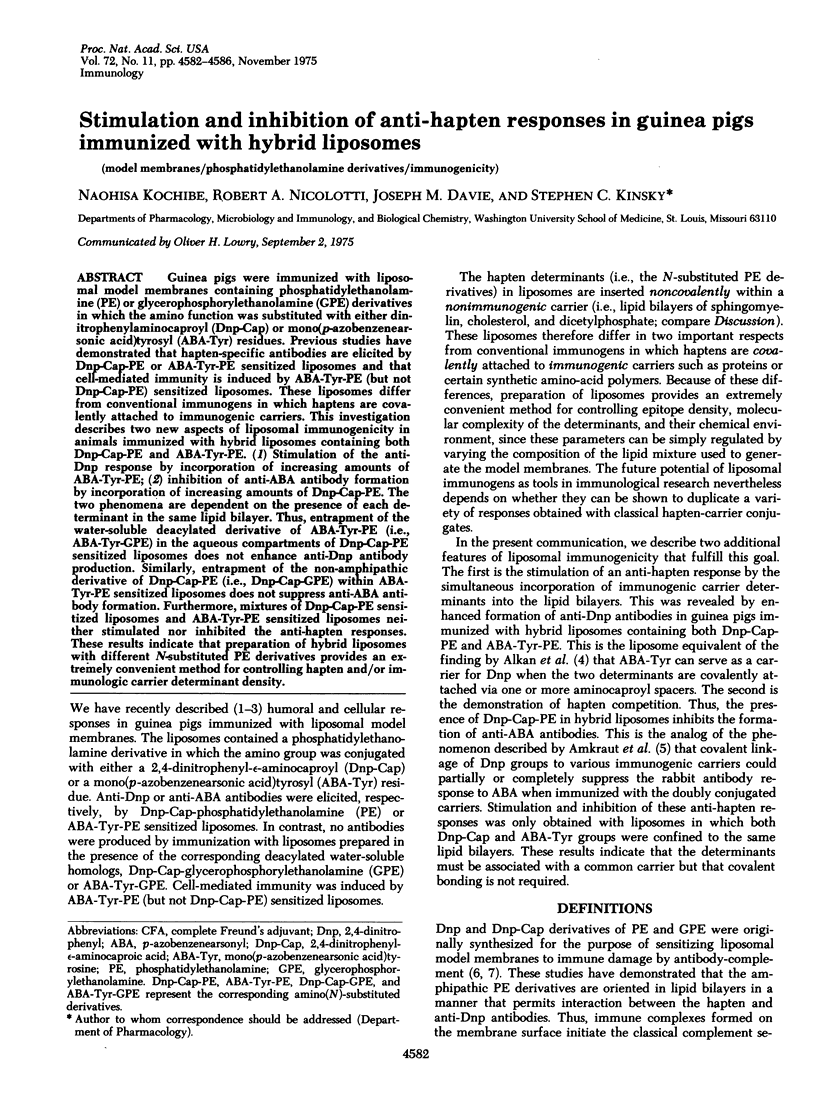
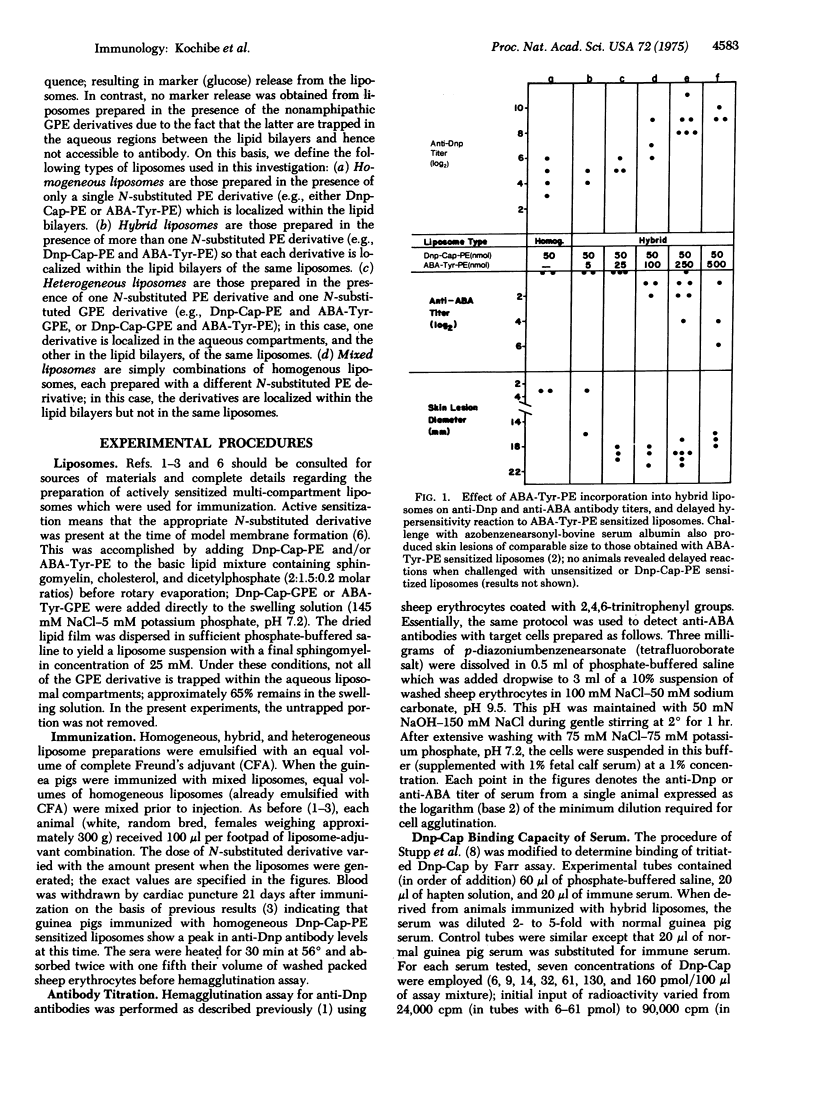
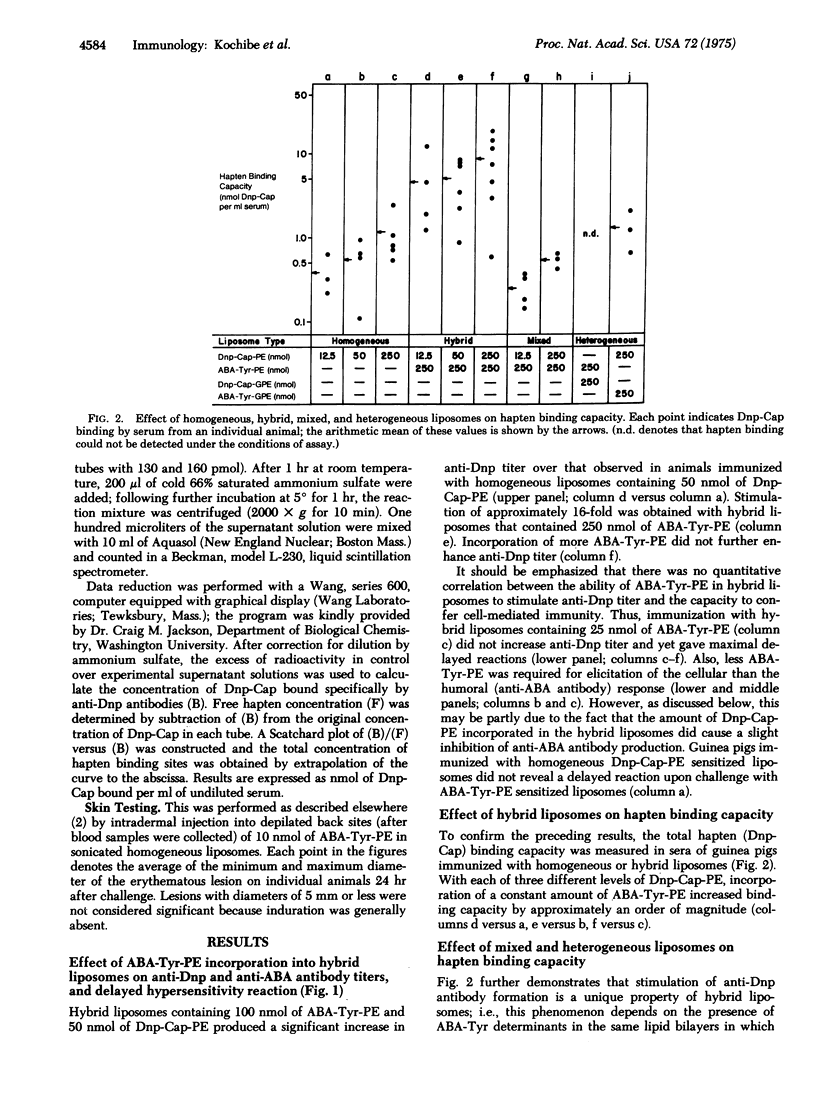
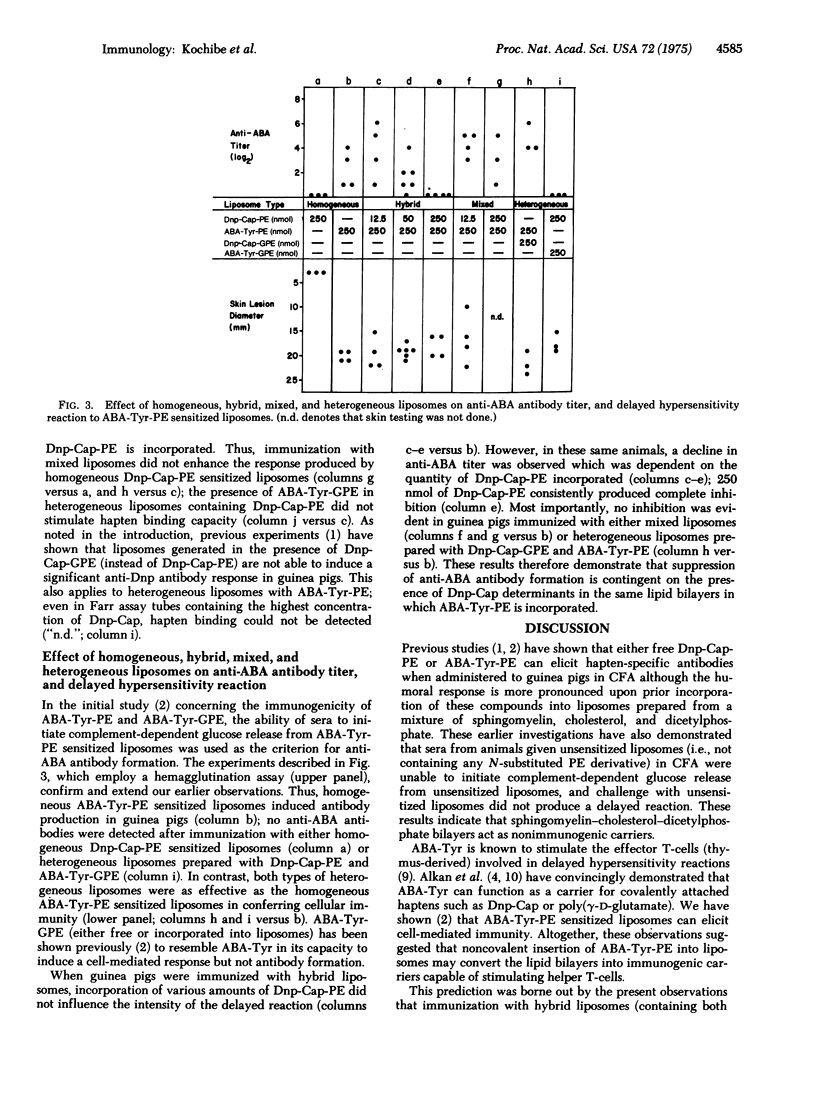
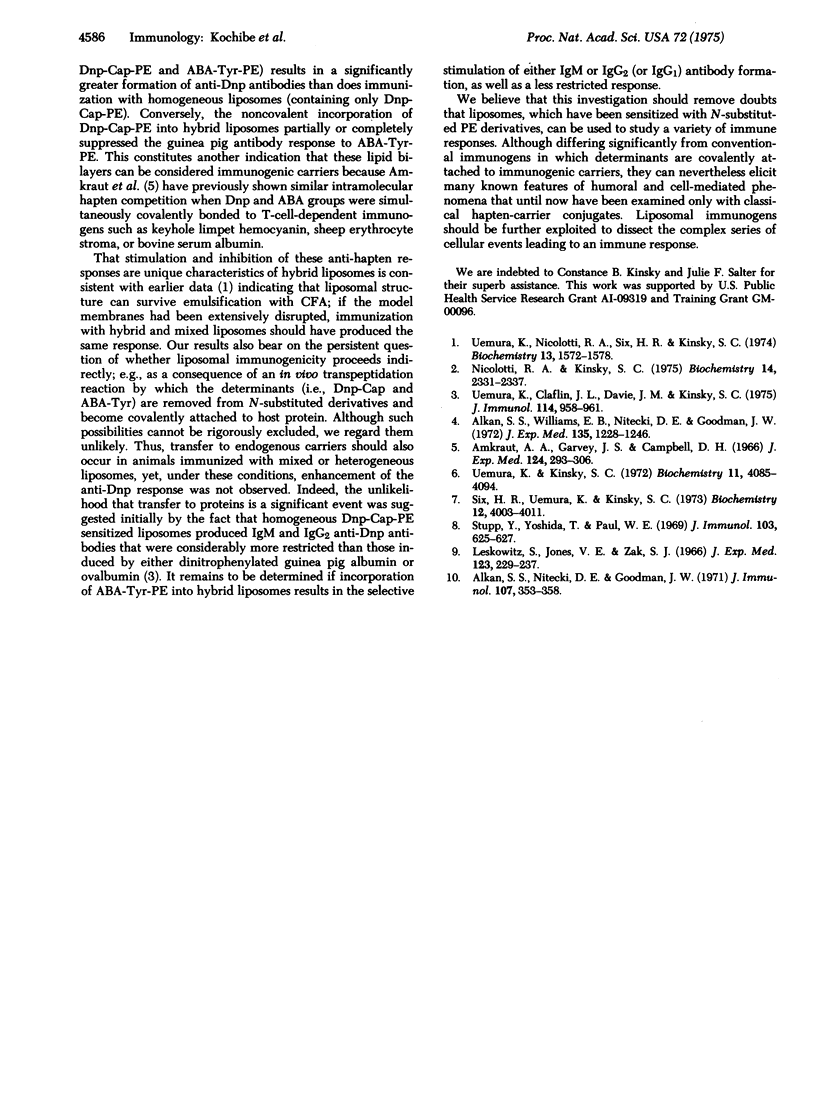
Selected References
These references are in PubMed. This may not be the complete list of references from this article.
- Alkan S. S., Nitecki D. E., Goodman J. W. Antigen recognition and the immune response: the capacity of L-tyrosine-azobenzenearsonate to serve as a carrier for a macromolecular hapten. J Immunol. 1971 Aug;107(2):353–358. [PubMed] [Google Scholar]
- Alkan S. S., Williams E. B., Nitecki D. E., Goodman J. W. Antigen recognition and the immune response. Humoral and cellular immune responses to small mono- and bifunctional antigen molecules. J Exp Med. 1972 Jun 1;135(6):1228–1246. doi: 10.1084/jem.135.6.1228. [DOI] [PMC free article] [PubMed] [Google Scholar]
- Amkraut A. A., Garvey J. S., Campbell D. H. Competition of haptens. J Exp Med. 1966 Sep 1;124(3):293–306. doi: 10.1084/jem.124.3.293. [DOI] [PMC free article] [PubMed] [Google Scholar]
- Leskowitz S., Jones V. E., Zak S. J. Immunochemical study of antigenic specificity in delayed hypersensitivity. V. Immunization with monovalent low molecular weight conjugates. J Exp Med. 1966 Feb 1;123(2):229–237. doi: 10.1084/jem.123.2.229. [DOI] [PMC free article] [PubMed] [Google Scholar]
- Nicolotti R. A., Kinsky S. C. Immunogenicity of liposomal model membranes sensitized with mono(p-azobenzenearsonic acid)tyrosylphosphatidylethanolamine derivatives. Antibody formation and delayed hypersensitivity reaction. Biochemistry. 1975 Jun 3;14(11):2331–2337. doi: 10.1021/bi00682a009. [DOI] [PubMed] [Google Scholar]
- Six H. R., Uemura K. I., Kinsky S. C. Effect of immunoglobulin class and affinity on the initiation of complement-dependent damage to liposomal model membranes sensitized with dinitrophenylated phospholipids. Biochemistry. 1973 Sep 25;12(20):4003–4011. doi: 10.1021/bi00744a034. [DOI] [PubMed] [Google Scholar]
- Stupp Y., Yoshida T., Paul W. E. Determination of antibody-hapten equilibrium constants by an ammonium sulfate precipitation technique. J Immunol. 1969 Sep;103(3):625–627. [PubMed] [Google Scholar]
- Uemura K., Claflin J. L., Davie J. M., Kinsky S. C. Immune response to liposomal model membranes: restricted IgM and IgG anti-dinitrophenyl antibodies produced in guinea pigs. J Immunol. 1975 Mar;114(3):958–961. [PubMed] [Google Scholar]
- Uemura K., Kinsky S. C. Active vs. passive sensitization of liposomes toward antibody and complement by dinitrophenylated derivatives of phosphatidylethanolamine. Biochemistry. 1972 Oct 24;11(22):4085–4094. doi: 10.1021/bi00772a010. [DOI] [PubMed] [Google Scholar]
- Uemura K., Nicolotti R. A., Six H. R., Kinsky S. C. Antibody formation in response to liposomal model membranes sensitized with N-substituted phosphatidylethanolamine derivatives. Biochemistry. 1974 Apr 9;13(8):1572–1578. doi: 10.1021/bi00705a003. [DOI] [PubMed] [Google Scholar]


